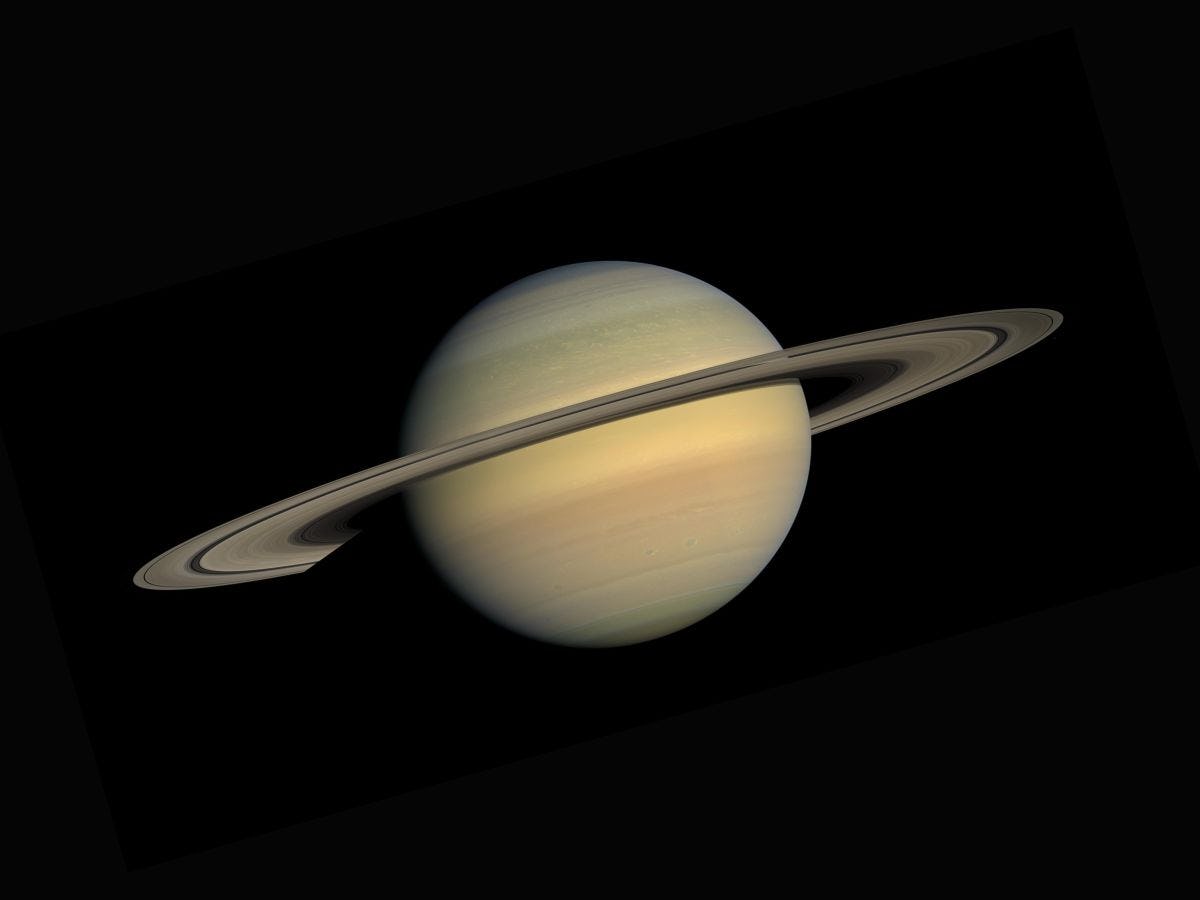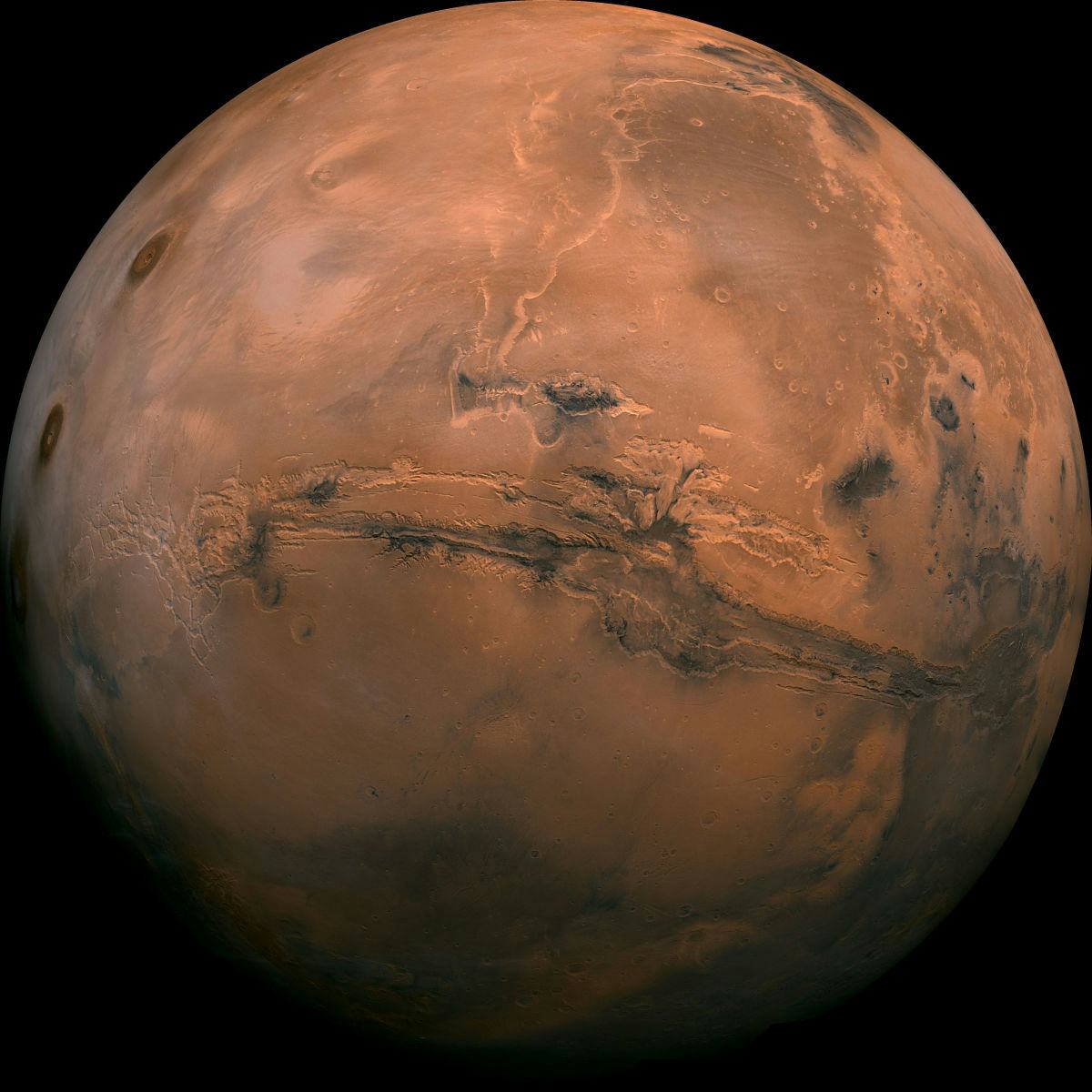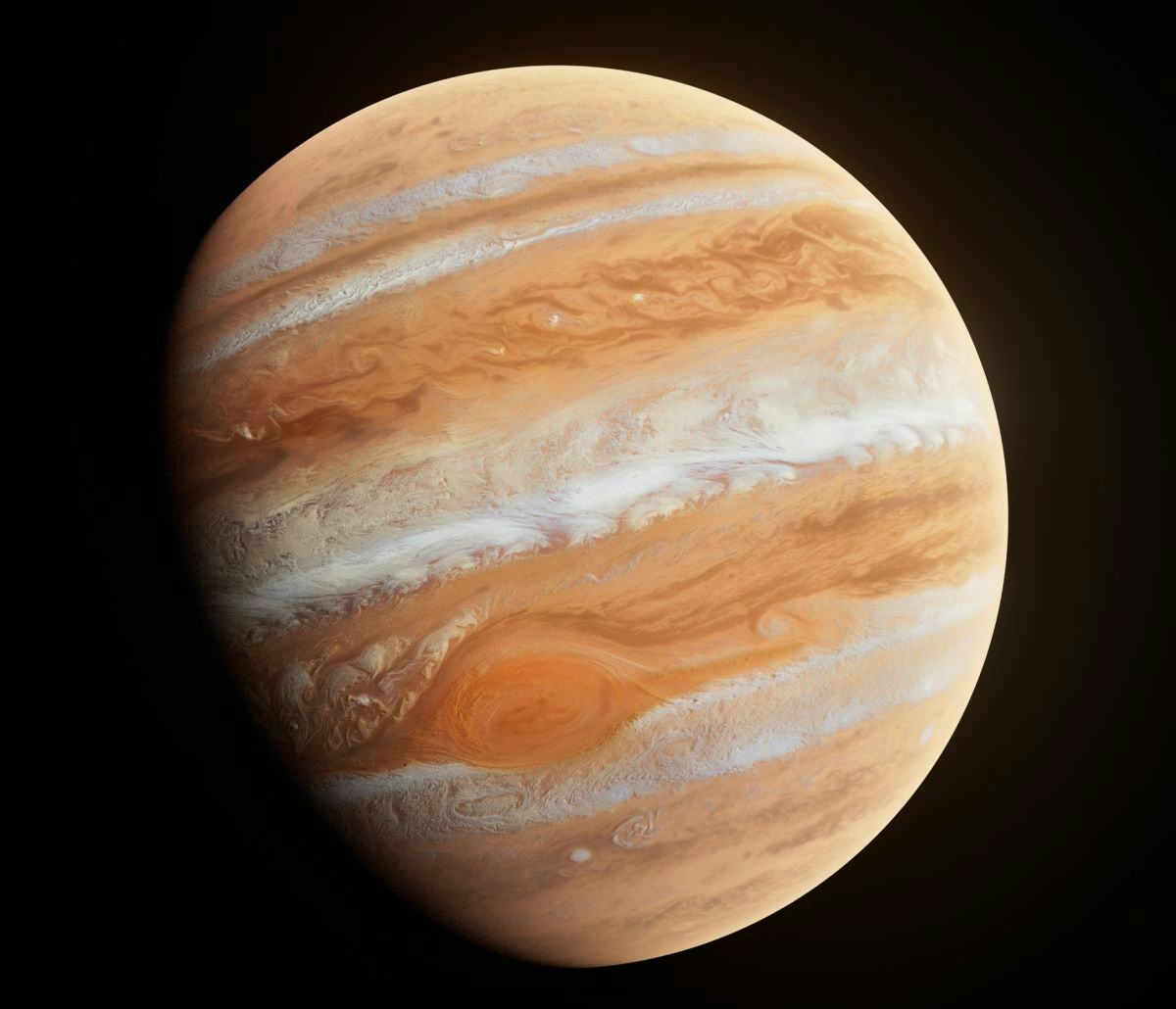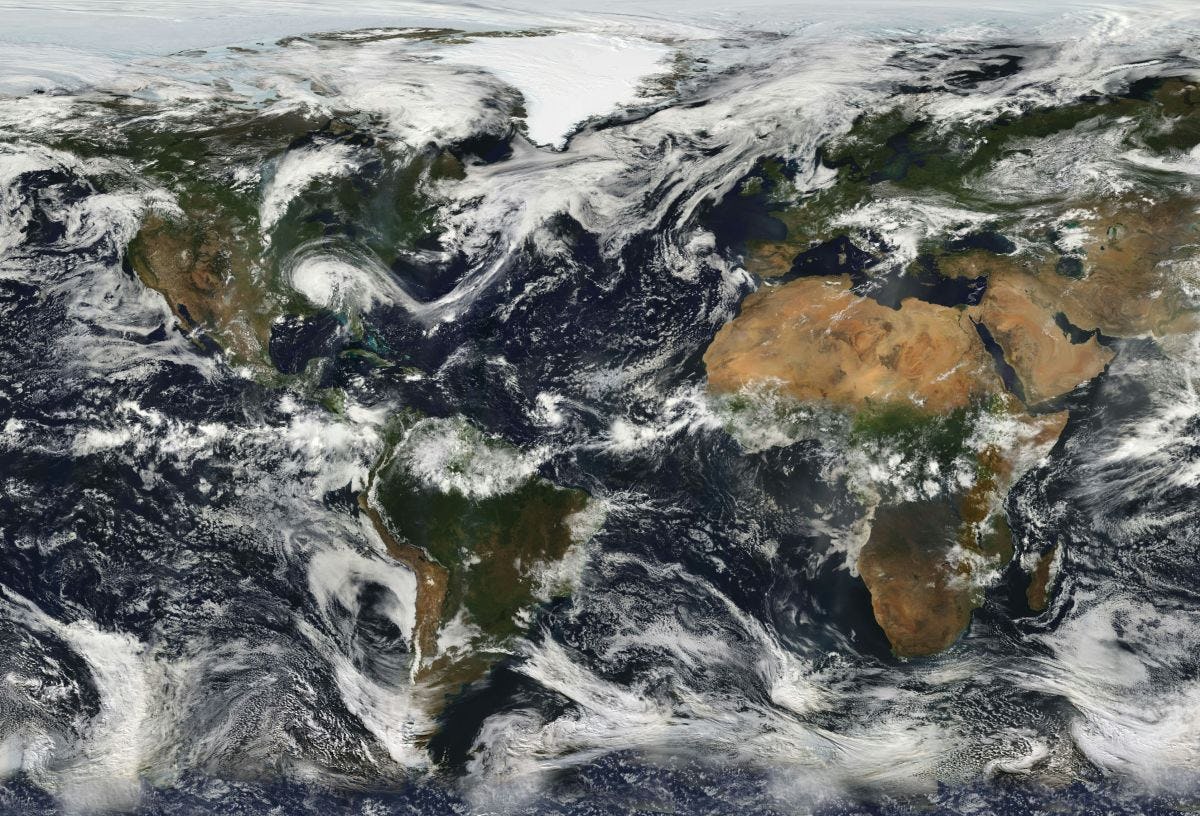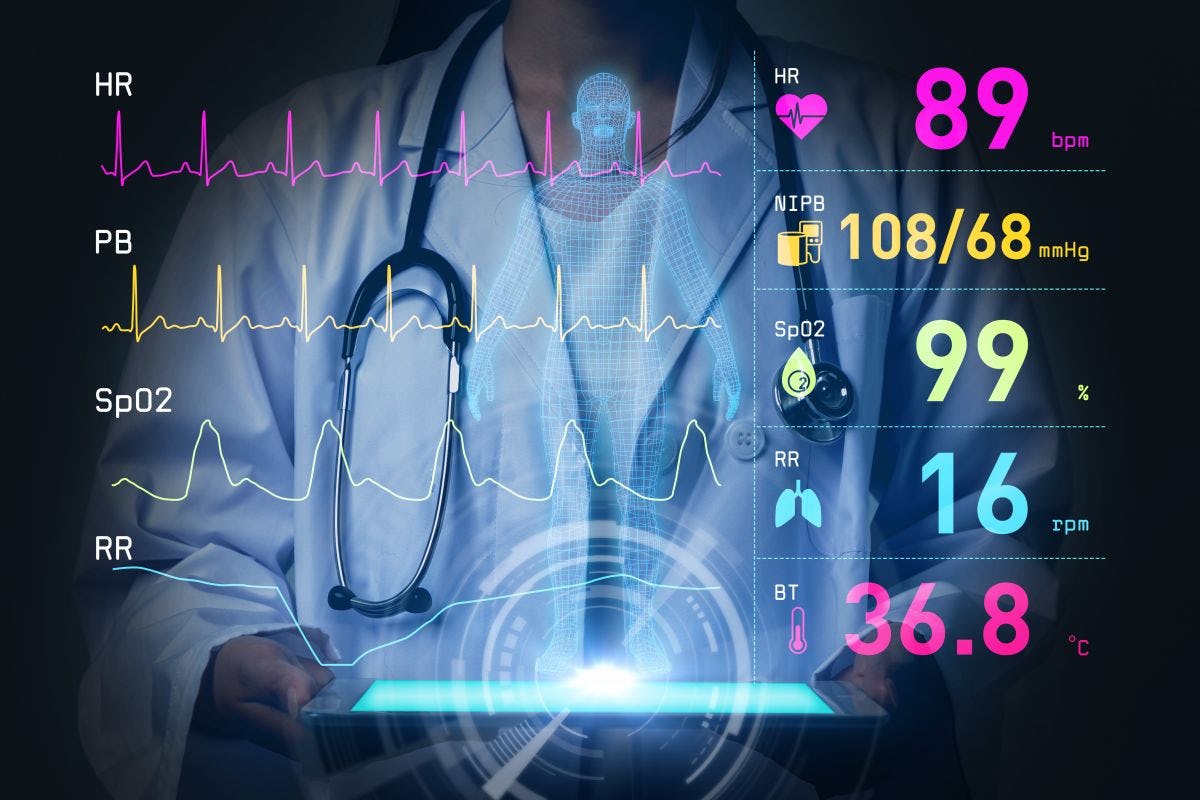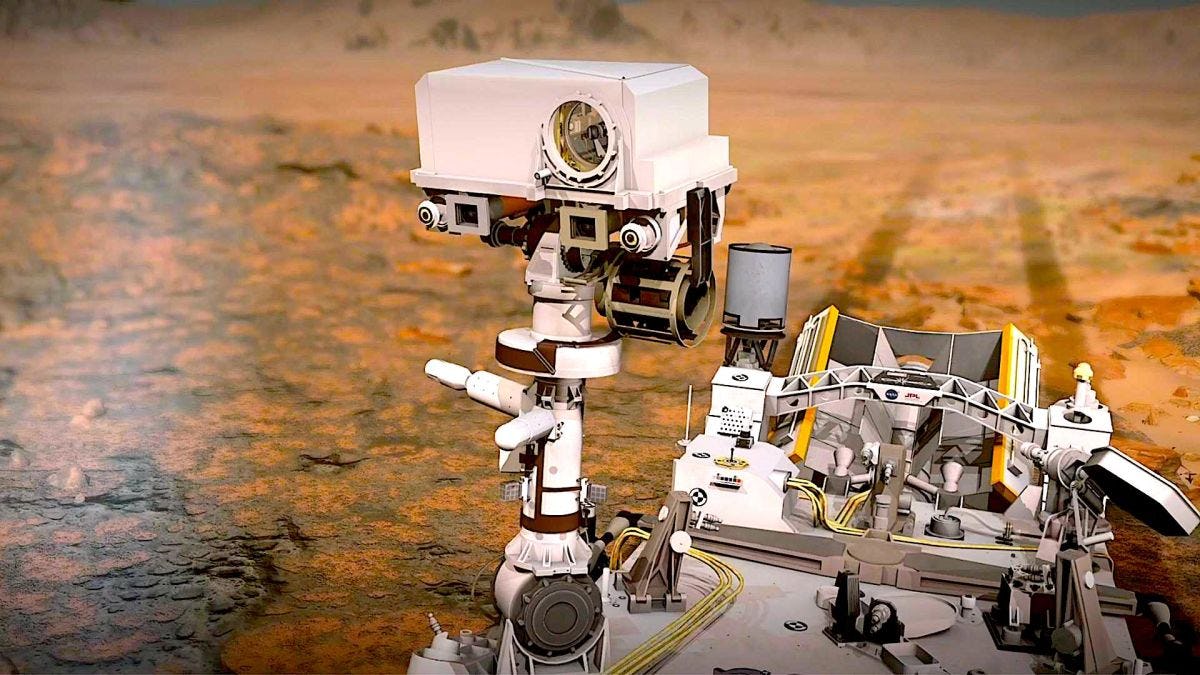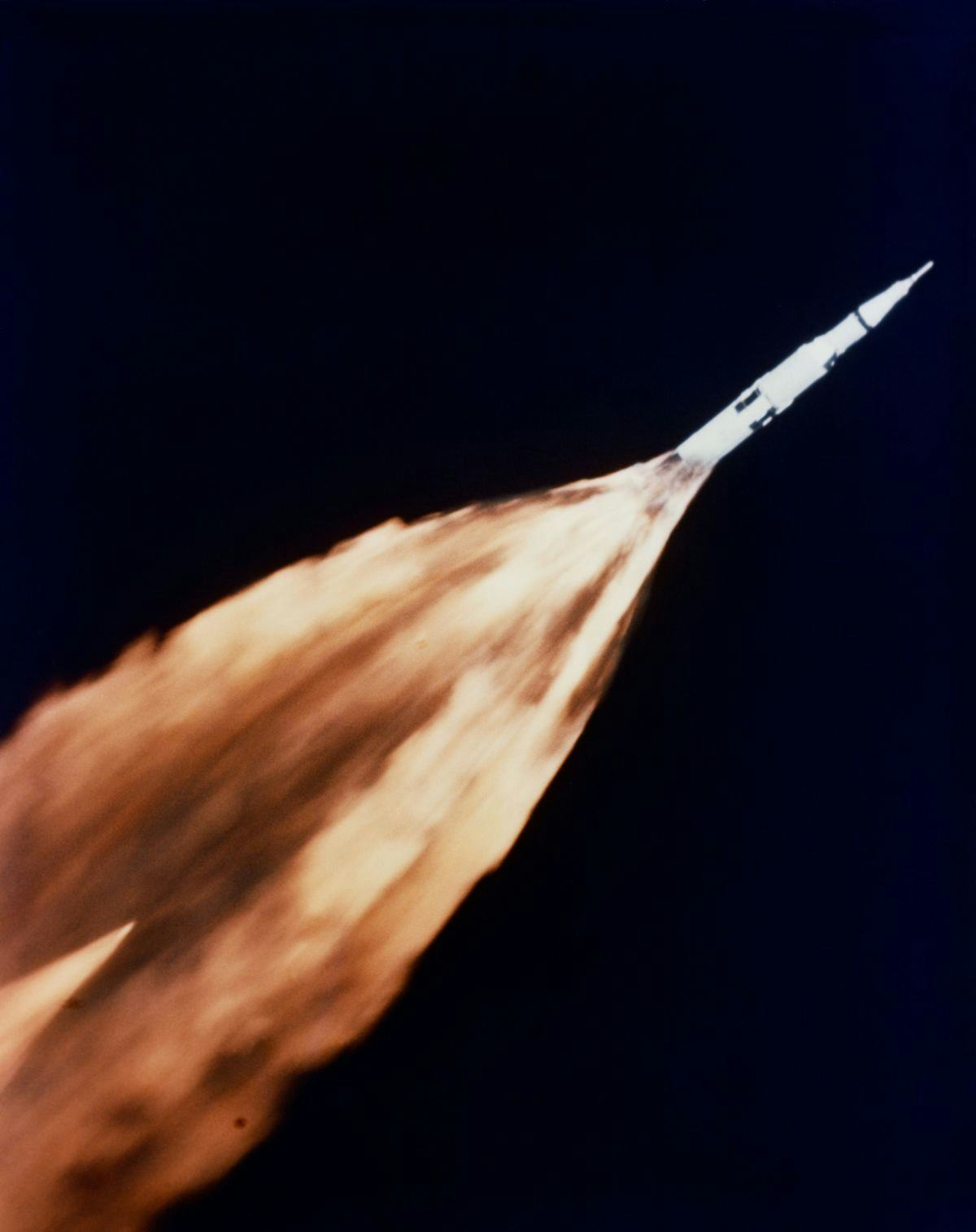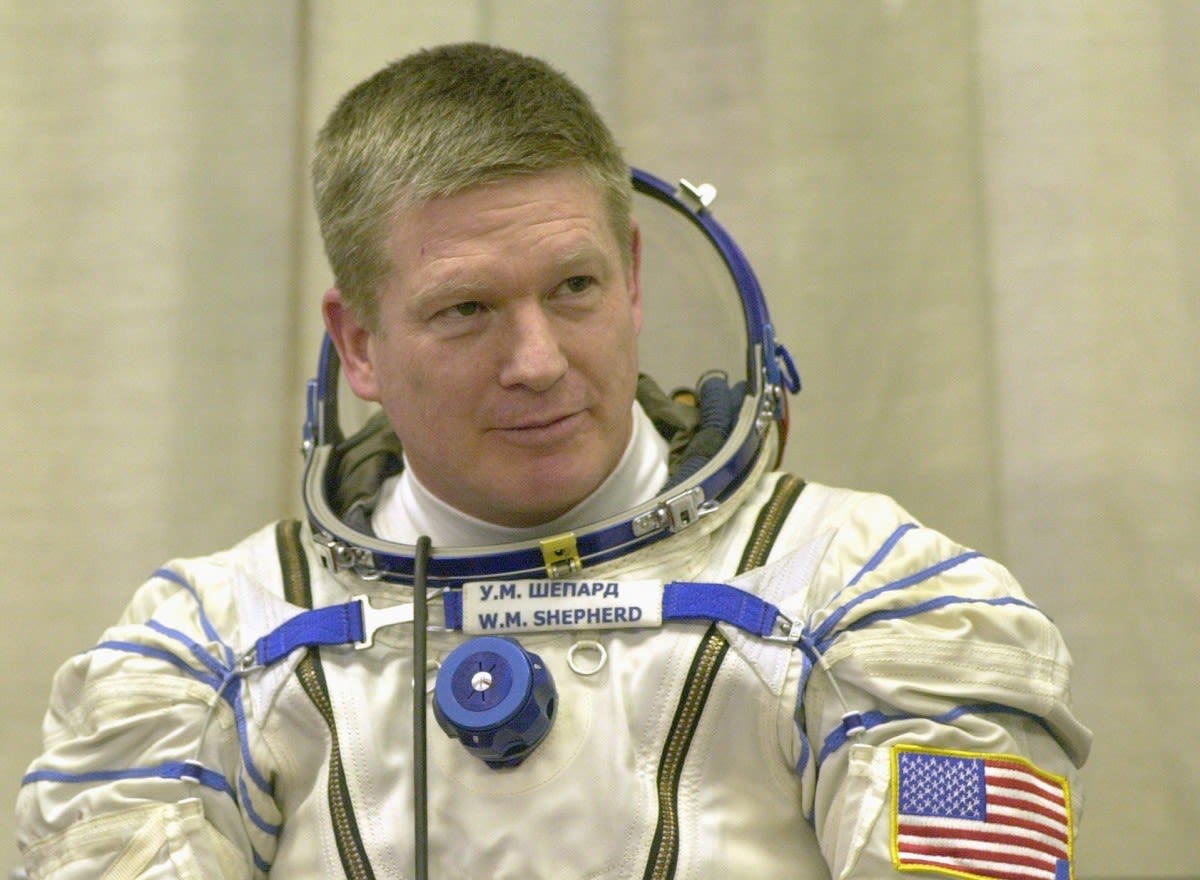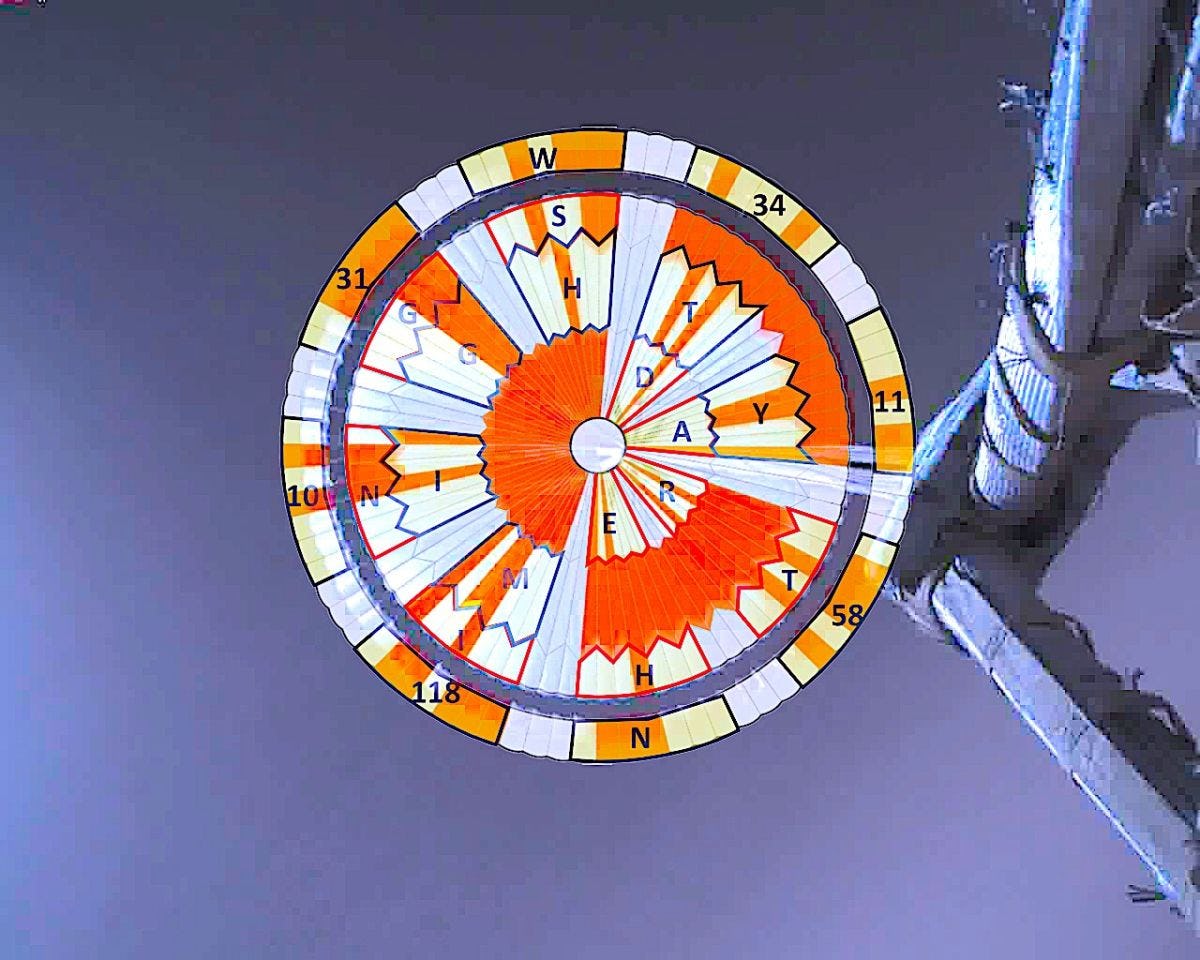Stevens is partnering with the world's leading space agency to examine climate change, monitor astronauts, develop planetary roving and landing technologies and more
For decades, Stevens alumni have occupied prominent roles at NASA, including Aaron Cohen M.S. '58 Hon. D.Eng. '82, who directed the Apollo lunar programs, the Space Shuttle program and the Johnson Space Center for the world's leading space agency.
NASA's close relationship with Stevens continues today.
Faculty researchers and student design teams receive regular support from the agency, working closely with NASA scientists on projects ranging from robots, modules and vehicles to mathematical modeling, mission planning, astronaut safety and terrestrial satellite image processing.
Graduating students also continue to join the agency, rising through the ranks in support of engineering, testing, design, operations, management and other roles.
Supporting planetary exploration
Stevens professor Jason Rabinovitch worked at NASA's Jet Propulsion Laboratory (JPL) — which is managed by Caltech — in California for more than 6 years before joining Stevens. He works closely with NASA on a range of projects that support, plan and will help enable current and future planetary exploration.
"We work on topics from modeling supersonic parachute inflations for Mars spacecraft to modeling the plume emanating into space from the south pole of Enceladus," explains Rabinovitch. "Student researchers at Stevens have also made substantial contributions to these topics and others, and they have greatly enjoyed working with NASA."
MARS
While at JPL, Rabinovitch supported the 2020 Perseverance Mars mission in a variety of roles. From delivering flight hardware, supporting parachute testing and helping to analyze Martian drill sample acquisition to testing the Mars helicopter Ingenuity and even modeling and analyzing interactions between rocket engines and the Martian surface, he was involved with many aspects of the mission.
He continues that work at Steven today, including a recent project modeling the large 20-meter-diameter supersonic parachutes used to land spacecraft on Mars.
In early 2023, working with JPL and the Space Science Institute, Rabinovitch also helped complete the first real-world study of Martian dust dynamics based on Ingenuity’s historic first flights on the Red Planet, paving the way for future extraterrestrial rotorcraft missions. That work, reported in the December 2022 issue of Journal of Geophysical Research: Planets, could support NASA’s Mars Sample Return Program as well as the Dragonfly mission that will set course for Titan (Saturn’s largest moon) in 2027.
VENUS
Rabinovitch makes calculations in collaboration with JPL for mission concepts that could soon explore Venus — a much hotter, bumpier and trickier planet to target. He's helping NASA narrow down potential landing zones by analyzing historical satellite and radar images of the planet's surface, applying image processing and statistical techniques to those images to determine rock distribution and size on the planet's surface as well as other physical features that could complicate landings.
Rabinovitch also works on a novel small-satellite mission concept that could one day actually collect a sample of the Venus atmosphere and return it to earth for analysis. In addition, he supports the Venus community and is also currently a Steering Committee Member of The Venus Exploration Analysis Group (VEXAG), as well as a member of the Venus Science Coordination Group (VeSCoor), which is a joint committee of NASA and ESA to identify new, unanticipated scientific approaches and outcomes based on synergies among the missions to Venus.
SATURN
What's next? Rabinovitch has his eye on computational modeling of plumes (an icy cold volcano) on one of Saturn's moons, Enceladus, as the U.S. considers potential future Saturnian missions as well.
Sharper eyes on climate change, water supplies
Stevens researcher Maroune Temimi develops algorithmic methods to sharpen satellite imagery of rivers, water supplies and landforms. His NASA-sponsored work for New York City, for instance, will develop modeling to automatically process NOAA satellite imagery of the watersheds, reservoirs and rivers that supply the city with water in order to monitor ice thickness and blockages in near real-time.
Physicist Knut Stamnes also works with NASA to improve its satellite imagery of the Earth's landforms and oceans to aide monitoring of global warming and other planetary change — which can be difficult when weather, cloud cover, dust and other conditions interfere with visibility.
Stamnes, director of the university’s Light and Life Lab, introduced a new mathematical algorithm for predicting how radiation transfers through layered material in the 1980s. Today he works with satellite imagery processing, utilizing techniques that algorithmically sharpen our understanding of ice and snow cover in polar regions and the phytoplankton living in the world's oceans.
With Stevens quantum physicist Yuping Huang, Stamnes has also contributed to research assessing the thickness of both the Antarctic ice sheet and Arctic sea ice.
Working with scientists at both NASA's Langley Research Center in Virginia and its Goddard Space Flight Center in Maryland — as well as researchers at the University of Arizona, the University of Maryland and several industry partners) — Stamnes and Huang helped refine models that draw on lidar measurement data collected by NASA's orbiting ICESat-2 satellite.
Stevens doctoral candidate Jiuyi Zhang was also honored by NASA in its 2021 annual report for related work in photonics, developing a novel method for measuring the absorption spectra in the atmosphere.
Wireless health monitors for astronauts
Stevens electrical and computer engineering professor Negar Ebadi leverages specially focused radars and conventional cameras to develop a new type of wireless monitor for heartbeat and respiration that could benefit astronauts, flight crews — and, eventually, all of us.
Ebadi, supported in part by a NASA grant and working with the Hoboken-based technology firm Autonomous Healthcare, has created algorithmic systems that focus the radar antenna's scanning beams more precisely on the chest and abdomen.
In early tests, the system obtained high accuracy even when viewing individuals or clusters in a simulated spacecraft environment moving in different positions and at different angles to the system.
Bringing back images of the Red Planet
Stevens graduate Matt Brand '21 is a key member of the New Mexico team that helps bring home stunning images of Mars daily.
In his role at Los Alamos National Laboratory (LANL), Brand helps plan and operate sophisticated imaging tools and imaging missions for NASA’s two Perseverance and Curiosity Martian rovers. To date, those projects have beamed more than 1 million images of the Red Planet back to us.
Much of Brand’s work involves two key instruments onboard those rovers: the ChemCam (on 2011-launched Curiosity) and the SuperCam (on 2020-launched Perseverance). LANL, which maintains laboratories specializing in spectroscopy, developed and helps operate those instruments in conjunction with the Centre National d'Etudes Spatiales (CNES) in France.
Both instruments utilize a high-powered laser to shoot rocks on the surface of Mars from several meters away, revealing their chemical composition from the gaseous plasma created when the laser contacts the rock through spectroscopy techniques.
Those techniques have already enabled ChemCam to make several important discoveries, including helping reveal subsurface salt deposits that may indicate previous bodies of water. The newer SuperCam incorporated a number upgrades, including the ability to take color images and a microphone that recorded the first-ever Martian audio.
Space debris, lunar bases
Stevens space logistics expert Hao Chen is conducting research for NASA’s Office of Technology, Policy & Strategy to address the thorny problem of the thousands of pieces of “space debris” that are created in space orbit the planet, posing risks to spacecraft and satellites. He will collaborative with West Virginia University in the effort.
"For this project, we will examine ways to incentivize commercial debris mitigation and investigate policy opportunities to keep Earth's orbits safe and secure for future missions,” says Chen. “Working closely together with the agency, we are able to provide direct support, thereby influencing the decision-making processes of policy makers and mission designers through our research findings."
Chen (with Rabinovitch) also advises Stevens student senior-design teams participating in NASA’s annual RASC-AL challenge. One 2022-2023 team designed a self-sustaining lunar base, while another integrated technology into spacesuits. For the 2023-24 RASC-AL project, the duo advise a student proposal to stage Mars missions for long durations on the moon.
Monitoring natural disasters
Faculty have worked with NASA’s Earth Science Technology Office to build systems that will enable earth scientists to test, evaluate and develop technologies for observing conditions on Earth.
One example: during floods, certain lower-resolution satellite images could be integrated with more powerful ground-based sensors to confirm local conditions, then tap into higher-resolution commercial satellites temporarily to gather additional imagery during disaster response — all automated, and in real time.
Keeping the space stations running
Stevens alumnus Ron Cobbs M.Eng. ’12 directs avionics and payloads as a chief engineer on the International Space Station (ISS), which has orbited Earth with a changing mix of international astronauts and scientists, modules and equipment since 1998.
Cobbs’ decorated career at NASA’s Johnson Space Center (JSC) in Houston spans more than three decades. In 2014 he was awarded the Director’s Commendation Award — the highest honor given by the space center — and Cobbs says his Stevens master's degree and graduate certificate in systems engineering fueled his rapid rise within the organization.
"We design, develop, build and test complex systems that go into space to support human space flight," explains Cobbs. "Systems engineering affects all aspects of each system."
Mary McCabe M.Eng. '09 is another highly placed Stevens graduate at JSC. McCabe, now acting associate division chief of the center's Crew and Thermal Systems Division, has worked for NASA since she was an undergraduate.
Today McCabe continues to focus on systems that enable crew communication, safety and monitoring, and she also participated in technical updates to the space shuttle following the 2003 Columbia accident that now allow NASA to monitor the shuttle's structural condition more comprehensively, in real time, during missions.
Planet-penetrating radar
Future planetary missions will drill into planetary surfaces, and Stevens researcher Yanghyo “Rod” Kim received recent JPL support to design a radar system that can penetrate soil, stone and snow, providing clearer images of what lies beneath.
Kim’s CMOS (complementary metal-oxide semiconductor) ground- penetrating radar will carry hardware-embedded artificial intelligence onboard to help guide its subsurface explorations. The system will be able to detect subsurface water and ice, says Kim, non-invasively.
After designing the basic functions of the system, the radar’s detection capabilities and other environmental testing will be performed at JPL in California.
Supersonic, hypersonic flight research
Stevens mechanical engineering professor Nick Parziale, an expert in the physics of supersonic and hypersonic flight — and a former intern at the Langley Research Center —builds knowledge and measurement tools to explore the thin, yet critical, "boundary layer" between vehicles in flight and atmospheric gases. The friction in that layer exerts major effects on spacecrafts' speed and fuel efficiency.
Since 2021, Parziale's research group has worked with the Langley Research Center under Space Act Agreement SAA1-34215 to study boundary-layer measurements and advanced diagnostics.
That work will help further our understanding of turbulent and transitional hypersonic boundary-layer physics and advance state-of-the-art focused laser differential interferometry techniques.
Exploring asteroids
One recent Stevens graduate, systems engineer Joan Marie Tubungbanua ’22, conducted a summer internship with JPL supporting the Pysche mission that launched in October 2023 and will explore a Massachusetts-sized, metallic asteroid in 2029. She later joined the lab, where she continues to work on the Pysche mission.
First-hand astronaut expertise
Stevens senior research scientist (and former Navy SEAL) Captain William Shepherd flew four space missions for NASA, including one as Commander of the first International Space Station crew. He was later awarded the Congressional Space Medal of Honor for his work organizing the space station program and his 4½-month mission in orbit with his crew.
Shepherd is affiliated with the Stevens-led Systems Engineering Research Center (SERC), a Department of Defense-certified consortium of more than 20 collaborating U.S. universities, where he manages SERC's "Capstone Marketplace and shares his experiences in space flight and technical disciplines with students.
Student-designed rovers, drills, space experiments
Stevens student teams also have a long and successful history of competing in NASA-sponsored challenges, including a 2019 team that placed second in the nation in the agency's Moon to Mars Ice & Prospecting Challenge with a semi-autonomous roving robot that can extract water from ice deposits buried beneath simulated Martian or lunar soils with a special copper-tipped drill.
That prototype, code-named DEIMOS (for Drill-based Extraction of Ice-water and Martian Overburden System), was recognized for producing the clearest water in the competition as well as the most accurate digital core samples. The team received a $10,000 stipend from NASA as well as additional sponsorship from Protolabs, one of the nation's leading digital manufacturing sources for rapid prototypes.
More recent student projects entering NASA's RocSat-C competitions included a lunar-roving project designed for especially sandy environments that incorporates fins to keep the unit stable while traveling or sampling on sandy surfaces — showcased at the university's 2022 Innovation Expo — and a 2023 effort to collect and return inert gas samples.
Both those experiments blasted off aboard NASA sounding rockets from a Virginia launchpad into the upper atmosphere.

